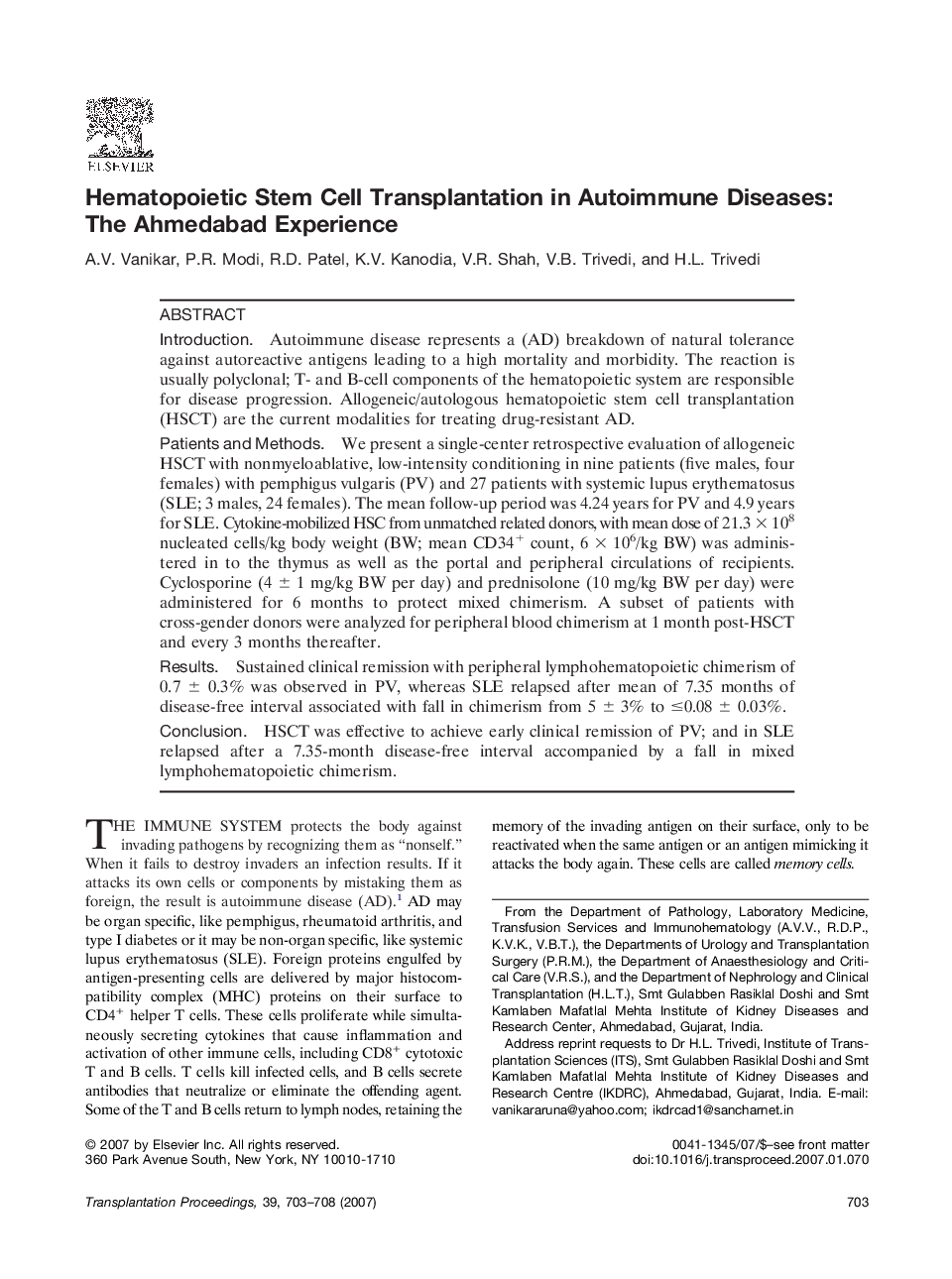| Article ID | Journal | Published Year | Pages | File Type |
|---|---|---|---|---|
| 4263193 | Transplantation Proceedings | 2007 | 6 Pages |
IntroductionAutoimmune disease represents a (AD) breakdown of natural tolerance against autoreactive antigens leading to a high mortality and morbidity. The reaction is usually polyclonal; T- and B-cell components of the hematopoietic system are responsible for disease progression. Allogeneic/autologous hematopoietic stem cell transplantation (HSCT) are the current modalities for treating drug-resistant AD.Patients and MethodsWe present a single-center retrospective evaluation of allogeneic HSCT with nonmyeloablative, low-intensity conditioning in nine patients (five males, four females) with pemphigus vulgaris (PV) and 27 patients with systemic lupus erythematosus (SLE; 3 males, 24 females). The mean follow-up period was 4.24 years for PV and 4.9 years for SLE. Cytokine-mobilized HSC from unmatched related donors, with mean dose of 21.3 × 108 nucleated cells/kg body weight (BW; mean CD34+ count, 6 × 106/kg BW) was administered in to the thymus as well as the portal and peripheral circulations of recipients. Cyclosporine (4 ± 1 mg/kg BW per day) and prednisolone (10 mg/kg BW per day) were administered for 6 months to protect mixed chimerism. A subset of patients with cross-gender donors were analyzed for peripheral blood chimerism at 1 month post-HSCT and every 3 months thereafter.ResultsSustained clinical remission with peripheral lymphohematopoietic chimerism of 0.7 ± 0.3% was observed in PV, whereas SLE relapsed after mean of 7.35 months of disease-free interval associated with fall in chimerism from 5 ± 3% to ≤0.08 ± 0.03%.ConclusionHSCT was effective to achieve early clinical remission of PV; and in SLE relapsed after a 7.35-month disease-free interval accompanied by a fall in mixed lymphohematopoietic chimerism.
